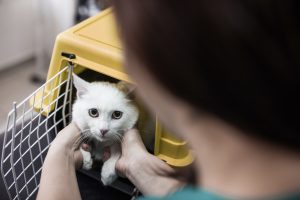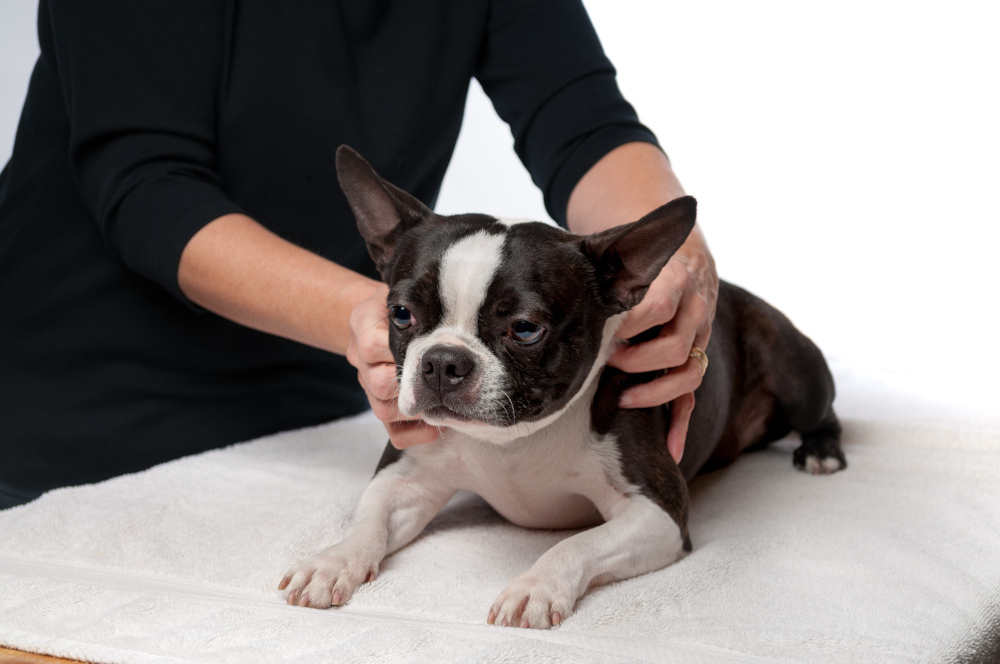Calm, Cool, And Collected: Tips For Getting Your Cat To The Vet
 Taking your cat to the vet is probably low on your list of enjoyable activities. Between the struggle to get kitty into the carrier, the car ride, and the shenanigans that may ensue once you get your cat up on the examination table, getting kitty to the clinic can be quite an ordeal.
Taking your cat to the vet is probably low on your list of enjoyable activities. Between the struggle to get kitty into the carrier, the car ride, and the shenanigans that may ensue once you get your cat up on the examination table, getting kitty to the clinic can be quite an ordeal.
Although cats are the most popular pets in the U.S., they visit the veterinarian far less frequently than their canine counterparts. Due in part to the troubles many cat owners face when it’s time to take kitty to the clinic, it’s estimated that a third of pet cats did not visit the veterinarian for any reason last year.
At Lone Tree Veterinary Medical Center, we believe that all pets have the right to high quality health care. If you are reluctant to bring your cat to the vet, we would like to extend our support and guidance to you with this often challenging task.
First Things First: Getting Your Cat To The Vet
Convincing a fearful or angry cat to willingly enter a carrier is a harrowing ordeal for many cat owners. Often, getting a cat into his or her crate involves sweat, anxiety, and maybe even a few minor injuries (for you, not the cat).
Helping your cat to become comfortable being in his or her carrier is an important part of the process of making visits to the veterinarian’s office less stressful, and it’s not as difficult to do as it sounds.
Begin with the following steps:
- Choose the right carrier – Go for a sturdy carrier that opens in the front, back, and top. This gives you and kitty multiple options when it comes to exiting and entering.
- Make the carrier part of the scenery – If you only drag the crate out right before it’s time to make the unpleasant journey to an unfamiliar or scary place, your cat is likely to associate it with a negative experience. Try keeping the carrier out at all times, door open. Fill the inside with familiar bedding, kitty’s favorite toys, or treats, to encourage him or her to willingly enter.
- Experiment with the door – Once kitty is comfortable being inside the carrier, try closing the door, opening it immediately if your cat shows signs of distress. Practice this until you are able to close the door without trouble. Then carry the crate around the house, short distances at first.
- Give it a Try – Practice going for short car rides with your cat in his or her crate. Building up to longer and longer distances.
- Positive Reinforcement – Reward your cat each step of the way, either with treats or playtime, or both.
Helpful Hints For A Low-Stress Office Visit
Cats are creatures of habit, and many don’t like being poked and prodded, especially by “strangers”. To make the examination process less stressful for your cat, make sure he or she is used to being handled at home. Slowly build up his or her tolerance for handling, offering rewards after each session. Exercise your cat just before leaving your home, as a tired kitty is often a less anxious kitty.
Most importantly…remain calm! Cats are extremely intuitive creatures, and can pick up on the emotions of their human family members. Maintain a positive, relaxed attitude throughout the process, and remember to speak kindly and reassuringly to your cat as often as possible.
As always, if you have any questions or concerns regarding your cat don’t hesitate to contact us. We look forward to seeing you and your feline friend soon!



